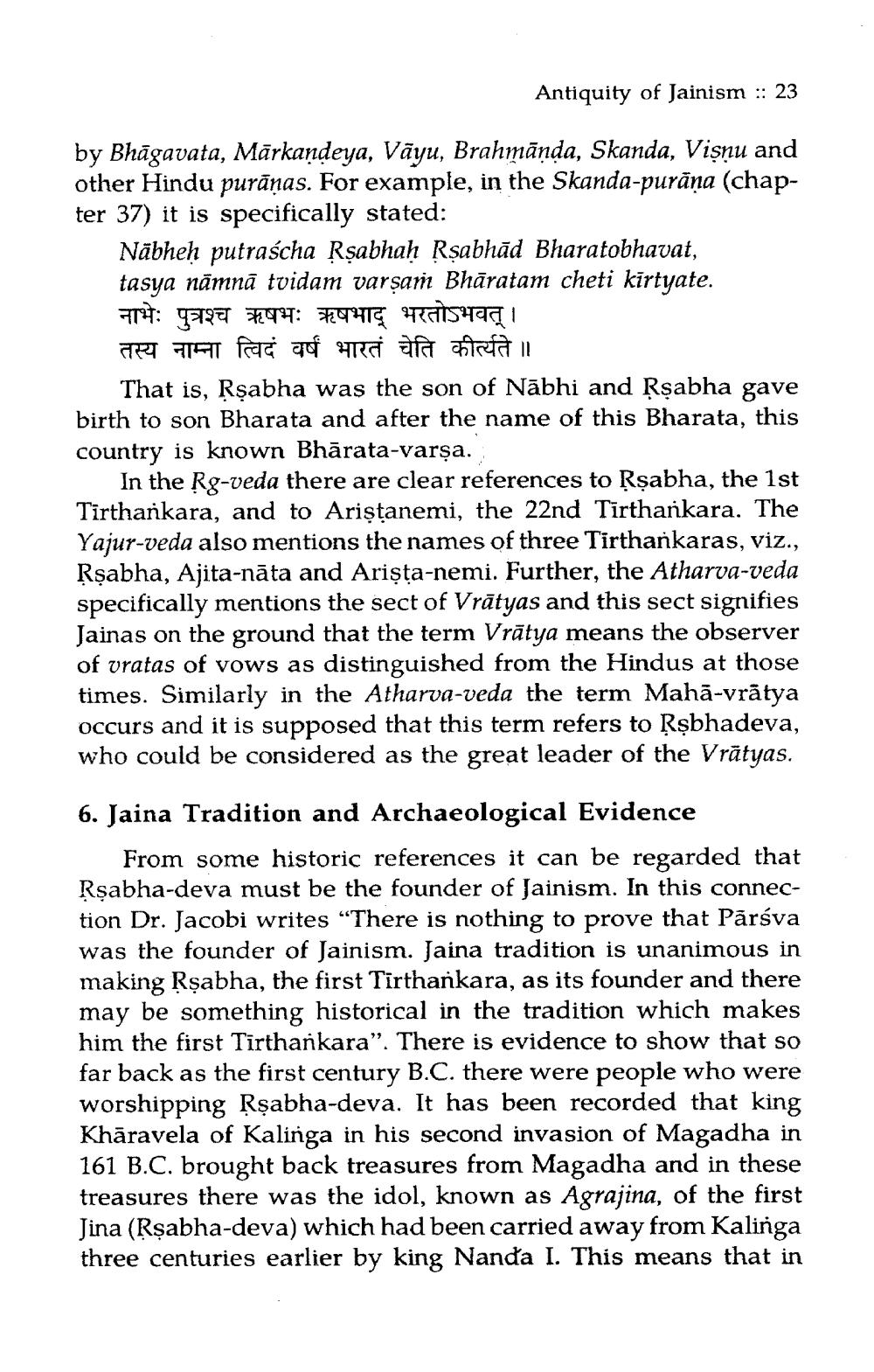________________
Antiquity of Jainism :: 23
by Bhāgavata, Mārkandeya, Vāyu, Brahmānda, Skanda, Vişnu and other Hindu purānas. For example, in the Skanda-purāņa (chapter 37) it is specifically stated:
Nābheh putrascha Rşabhaḥ Rşabhād Bharatobhavat, tasya nämnā tvidam varşam Bhāratam cheti kīrtyate. नाभेः पुत्रश्च ऋषभः ऋषभाद् भरतोऽभवत्। तस्य नाम्ना त्विदं वर्ष भारतं चेति कीर्त्यते ॥
That is, Rşabha was the son of Nābhi and Rşabha gave birth to son Bharata and after the name of this Bharata, this country is known Bhārata-varsa.
In the Rg-veda there are clear references to Rşabha, the 1st Tīrtharkara, and to Aristanemi, the 22nd Tīrtharkara. The Yajur-veda also mentions the names of three Tirthankaras, viz., Rşabha, Ajita-nāta and Arişta-nemi. Further, the Atharva-veda specifically mentions the sect of Vrātyas and this sect signifies Jainas on the ground that the term Vrātya means the observer of vratas of vows as distinguished from the Hindus at those times. Similarly in the Atharva-veda the term Mahā-vrátya occurs and it is supposed that this term refers to Rşbhadeva, who could be considered as the great leader of the Vrātyas.
6. Jaina Tradition and Archaeological Evidence
From some historic references it can be regarded that Rşabha-deva must be the founder of Jainism. In this connection Dr. Jacobi writes “There is nothing to prove that Pārsva was the founder of Jainism. Jaina tradition is unanimous in making Rşabha, the first Tirthankara, as its founder and there may be something historical in the tradition which makes him the first Tīrthankara”. There is evidence to show that so far back as the first century B.C. there were people who were worshipping Rşabha-deva. It has been recorded that king Khāravela of Kalinga in his second invasion of Magadha in 161 B.C. brought back treasures from Magadha and in these treasures there was the idol, known as Agrajina, of the first Jina (Rşabha-deva) which had been carried away from Kalinga three centuries earlier by king Nanda I. This means that in




